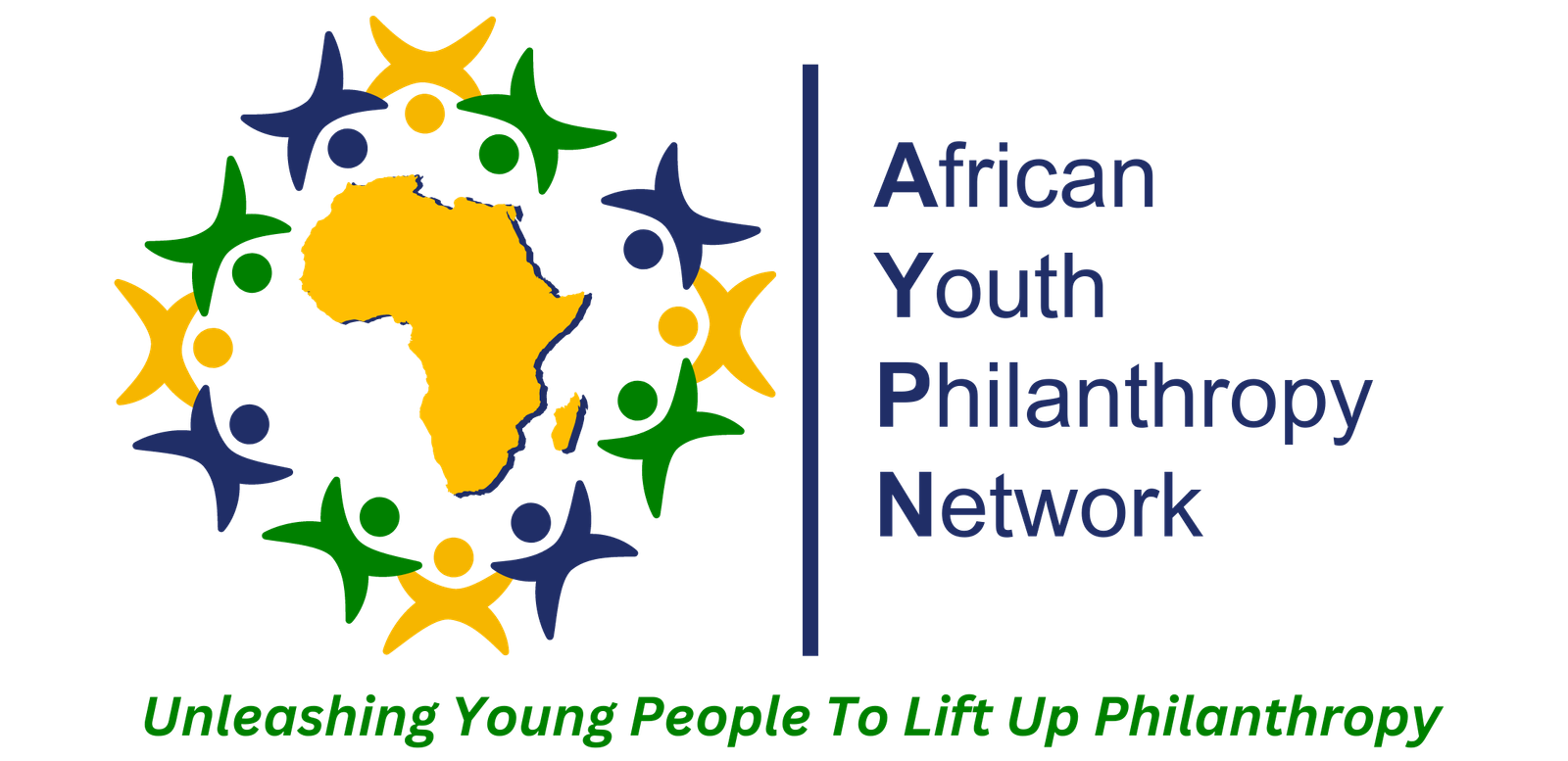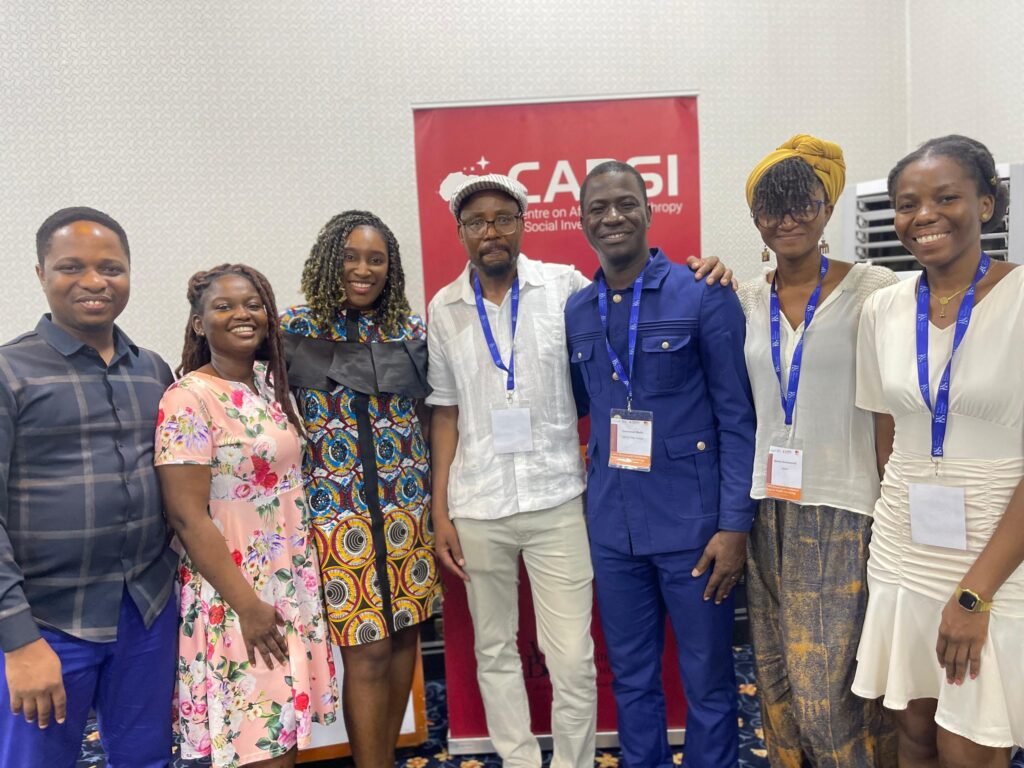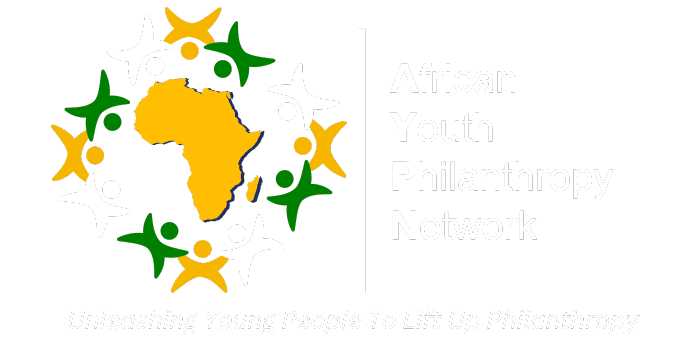Introduction
This paper explores the concept of youth philanthropy in Africa and its importance. It provides an overview of the philanthropic landscape in the African sub-region, highlighting the key stakeholders involved. This article also explores the challenges and opportunities that exist within the youth philanthropy ecosystem. Overall, it seeks to set the stage for understanding the complexities of youth philanthropy in Africa and the need for strategic partnerships in order to create effective and sustainable initiatives.
Philanthropy in Africa is not generally understood, nor is it preferred in Africa, simply because it is not inclusive both in its scope and reach. The classical definition and indeed the very historical trajectory of philanthropy from the American and perhaps European understanding are not fully encompassing of the nature and character of what in Africa can be likened to “philanthropy.”
Because of this, it must be noted that in this entry, the term “philanthropy” is used cautiously. It is used to capture two dimensions of what exists in Africa and is understood to refer to philanthropy. Many have preferred rather to refer to this phenomenon as African philanthropy; while others have opted to describe the same phenomenon as philanthropy with African features. Both ways, there is something that can be called “philanthropy” in Africa; and it takes primarily two dimensions:
indigenous – usually informal; and institutional. This includes international philanthropic institutions such as foundations, both traditional and new entrants; local institutions and indigenous mechanisms through which communities assist each other and develop their societies.
Importance of Youth Philanthropy in Africa
Youth philanthropy plays a crucial role in Africa, driving positive change and addressing pressing social issues. Philanthropy is an important aspect of the social and economic development of any region. In Sub-Saharan Africa, the philanthropic landscape is diverse and complex, with various stakeholders involved in the process. According to a report by “The Bridgespan Group”, African philanthropists gave seven times the annual average number of large donations for the previous decade in response to the COVID-19 pandemic.
The Global Philanthropy Environment Index (GPEI) indicated that an overview of the enabling environment for philanthropy in Sub-Saharan Africa can be achieved by evaluating the regulatory, political, economic, and socio-cultural incentives and barriers to philanthropy in countries of this region. According to the GPEI report, philanthropy plays a vital role in meeting development challenges and mitigating crises in Sub-Saharan Africa.
Youth philanthropy is an emerging field in Africa that has gained significant attention in recent years. The youth population in Africa is growing rapidly and is expected to double by 2055. The report by “The Bridgespan Group”, indicates that African donors gave 45 large donations totaling roughly $269 million from March through December of 2020 in three countries. According to United Nations, General Assembly, report in 2015, the youth are critical to achieving sustainable development, especially for the less developed world. This is evidenced in the following quote from the UN report, “We recognize that investing in children and youth is critical to achieving inclusive, equitable and sustainable development for present and future generations, and we recognize the need to support countries that face particular challenges to make the requisite investments in this area”
In November 2022, the African Youth Philanthropy Network (AYPN) held its third Leadership Conference in Accra, Ghana where Sub-Regional Leaders, AYPN Secretariat Team and AYPN Co-Hosts Partner Teams were all brought together to a round table discussion on strategies to contribute to youth philanthropy growth and how to improve the culture of giving among next-generation philanthropists in Africa.
The AYPN Leadership Conference (ALC) 2022 which is part of the ‘Unleashing Young People to Lift Up Philanthropy’ Initiative was launched to enhance youth-led philanthropy contributions towards the achievements of the SDGs.
In a report by the African Leadership Magazine, suggests that investing in African youth and youth philanthropy initiatives in Africa is one of the key approaches to development in the region. The youth represent a strong labor force for the production of goods and services, and as such youth philanthropy initiatives’ will contribute to strengthening the youth’s ability to meet their own subsistence needs, prevent and reduce vulnerabilities to economic, political, and socially unstable environments, and as well create much-needed jobs and a culture of entrepreneurship and innovation.
The international community in the 1980s and 1990s provided critical support for Philanthropy organisations in Africa, especially Kenya which favored governmental reforms in the 2000s and led to the establishment of networks like EAPN and community foundations like KCDF. These organisations have fostered a more integrated Philanthropy Support Ecocystem (PSE), providing investments in technological platforms and championing an increase in the mobile giving of
philanthropic resources.
Philantrophy organisations have impacted peoples’ philanthropic behaviors, including how much they give and to whom. Philantrophy Organisations, according to field practitioners, have greatly contributed to increasing awareness among donors, resulting in an increase in funding inside the country. Furthermore, the philanthropy sector has experienced an increase in opportunities, drawing a large pool of people. Unlike in the past, when development professionals had few options, Philantrophy Organisations have made impact-driven careers a viable option for the next generation.
Philanthropy serves as an effective incentive for the development of skills, community involvement, and organizational decision-making particularly among young people. Participants in youth philanthropy programs learn important skills such as data analysis, financial decisionmaking, teamwork, and public speaking. A study on the evaluation of the 2013 Michigan Community Foundation Youth Project and the 2021 impact report from Canada’s Youth and Philanthropy Initiative, suggest that these programs have a good influence on communication skills and employment preparedness of the youth.
Philanthropy programs enhances the engagement of youths in the organizational decision-making process. Meaningful involvement of young people ensures that diverse perspectives re considered. Youth philanthropy engagements also foster a deep community relation that nurture a sense of belonging and civic responsibility.
Another importance of youth philanthropy is seen in how philanthropy programs encourage adult mentorships that provide guidance and support for the youth without stifling their independence,
Overview of the philanthropic landscape in Africa
The philanthropic landscape in Africa is diverse and multifaceted, with various stakeholders, challenges, and opportunities. Key stakeholders include non-profit organizations, foundations, government agencies, and corporate entities, each with their unique goals and values.
Understanding the Youth Philanthropy Ecosystem in Africa involves examining the definition and scope of youth philanthropy, as well as identifying key stakeholders in this field. There are both challenges and opportunities present in youth philanthropy, and understanding how to navigate these can lead to more effective partnerships and collaborations. By mapping strategic partnerships in Africa, it becomes possible to identify potential partners within the philanthropic sector and assess the alignment of goals and values. Evaluating the capacity and resources of potential partners is also crucial in building collaborative networks that will enhance youth philanthropy efforts.
Stakeholders in the youth philanthropy ecosystem play a crucial role in driving impactful change in Africa. Stakeholders in the ecosystem include youth-led organizations, philanthropic foundations, non-governmental organizations (NGOs), government agencies, and corporate entities. Youth-led organizations serve as the driving force behind youth philanthropy initiatives,
bringing together young people who are passionate about social change. Philanthropic foundations provide financial resources and strategic support to these initiatives, while NGOs contribute their expertise and on-the-ground experience. Government agencies play a regulatory and enabling role, providing necessary frameworks and resources, and corporate entities bring in additional funding and resources through corporate social responsibility programs. Together, these stakeholders form a dynamic ecosystem that fosters collaboration and innovation in youth philanthropy, ultimately working towards sustainable development and positive social impact in Africa.
Stakeholders within the youth philanthropy ecosystem can partner with youth philanthropy organizations in several ways. To harness the potential of youth philanthropy, stakeholders within the youth philanthropy ecosystem must collaborate effectively with youth philanthropy organizations.
- Engaging Youth in Decision-Making Processes: One of the fundamental ways stakeholders can empower youth philanthropy is by involving young people in decision-making processes. By giving them a seat at the table, organizations can leverage their unique insights to address pressing challenges within communities. This collaborative approach not only amplifies the voices of the youth but also strengthens the mission and values of the organization itself.
- Investing in African Youth for Sustainable Development: Investing in African youth not only fosters their personal development but also contributes significantly to societal progress. By providing opportunities for education, skill development, and entrepreneurship, stakeholders can empower young Africans to create economic stability, reduce vulnerabilities, and establish innovative ventures that benefit their communities and beyond.
- Partnering with Youth-Led Organizations:
Collaborating directly with youth-led organizations is a strategic move. Such partnerships enable stakeholders and organizations to create more effective strategies and programs catered specifically to youth needs. - Providing Mentorship Opportunities: Mentorship programs play a pivotal role in nurturing the potential of young individuals. By connecting experienced professionals with aspiring youth, mentorship opportunities facilitate skill development, network building, and valuable real-world experiences⁴.
- Funding Youth-Led Initiatives: Financial support is the lifeblood of youth-led initiatives. By providing funding, stakeholders enable young people to transform their innovative ideas into impactful projects. This funding not only facilitates skill development and networking but also empowers youth to drive positive change within their communities.
- Encouraging Intergenerational Collaboration: Intergenerational collaboration bridges the gap between experience and innovation. By facilitating interactions between young minds and seasoned professionals, stakeholders promote knowledge exchange, fostering an environment where creativity thrives.
- Providing Resources for Capacity Building: Resources for capacity building empower young individuals with the tools they need to excel. Whether it’s educational resources, technology, or mentorship, these provisions enhance their skills and abilities, enabling them to make a significant impact⁵.
- Creating Networking Opportunities: Networking is invaluable in the professional world. By creating platforms for young people to connect with experienced professionals, stakeholders facilitate the development of meaningful relationships, opening doors for future collaborations and mentorship⁴.
- Advocacy for Positive Social Change: Advocacy opportunities empower young individuals to raise their voices on social issues. By engaging in advocacy efforts, they not only gain valuable experience but also contribute to positive societal transformations, making a lasting impact
Challenges and opportunities in youth philanthropy
Challenges and opportunities in youth philanthropy in Africa present unique circumstances for stakeholders in the philanthropic sector. These challenges include limited access to funding and resources, as well as a lack of infrastructure and support for youth-led initiatives. However, there are also significant opportunities for collaboration and innovation in this space. Engaging youth in philanthropy can bring fresh perspectives and creative solutions to pressing social issues. Building
strategic partnerships with key stakeholders, such as non-profit organizations and businesses, can amplify the impact of youth-led initiatives. Leveraging technology and data analytics can also enhance networking efforts and inform decision-making. By addressing these challenges and capitalizing on opportunities, the youth philanthropy ecosystem in Africa can be strengthened to create greater social impact.
Mapping Strategic Partnerships in Africa
Mapping strategic partnerships in Africa involves several key steps. Firstly, it is important to identify potential partners in the philanthropic sector who align with the goals and values of youth philanthropy. This entails assessing their capacity and resources to ensure they have the necessary capabilities to contribute effectively. Building collaborative networks is crucial for effective youth philanthropy, as it allows for knowledge sharing, resource pooling, and collective action. Case studies of successful partnerships can provide valuable lessons and insights into what works in practice. Strategies for establishing effective partnerships include developing a partnership strategy and criteria, initiating dialogue with potential partners, negotiating and formalizing partnership agreements, and monitoring and evaluating partnership outcomes. Leveraging
technology can enhance partnerships by expanding youth philanthropy networks, utilizing online platforms and tools to connect potential partners, and utilizing data and analytics to inform decision-making. Exploring future trends and opportunities in youth philanthropy in Africa, such as innovative funding models and cross-sector collaborations, will be critical for maximizing impact in the years to come.
Youth-led initiatives and their strategic partners
Youth-led initiatives in Africa are playing a crucial role in the philanthropic sector, often partnering with strategic organizations to maximize their impact. These partnerships are essential as they bring together the resources, expertise, and networks of both parties to address pressing social challenges. Successful youth-led initiatives and their strategic partners have shown the power of collaboration in achieving their philanthropic goals. Through these partnerships, they have been able to leverage their strengths, build sustainable networks, and create meaningful change in their communities. These case studies provide valuable insights into effective collaboration models and highlight the importance of aligning goals and values, assessing capacity and resources, and building collaborative networks. By learning from lessons gleaned from these successful partnerships, organizations can develop effective strategies for establishing and sustaining partnerships that address the unique challenges and opportunities in youth philanthropy in Africa.
Strategies for Establishing Effective Partnerships
- Developing a partnership strategy and criteria: In order to establish effective partnerships, it is crucial to develop a clear strategy and set specific criteria for potential partners. This will help ensure that partnerships align with the goals and values of the youth philanthropy ecosystem in Africa. Developing a partnership strategy and criteria involves identifying the key factors that will guide the selection of potential partners. This includes considering the goals and values of both
parties, as well as their capacity and resources. Building collaborative networks is essential for effective youth philanthropy, as it allows for the sharing of knowledge, resources, and expertise. By studying case studies of successful partnerships, valuable lessons can be learned to inform future collaborations. Overall, an effective partnership strategy requires careful evaluation and consideration of the alignment, capacity, and potential impact of potential partners. - Approaching potential partners and initiating dialogue: Once potential partners have been identified, it is important to approach them and initiate a dialogue. This can involve reaching out through various communication channels and expressing interest in collaboration, as well as highlighting the mutual benefits of the partnership. Approaching potential partners and initiating dialogue is a crucial step in building strategic partnerships in the youth philanthropy ecosystem. It involves identifying and reaching out to potential partners in the philanthropic sector, assessing
the alignment of goals and values, and evaluating their capacity and resources. By establishing collaborative networks, youth philanthropy can become more effective in addressing the challenges and opportunities in Africa. Successful case studies provide valuable lessons on the impact of partnerships on youth-led initiatives. Strategies for establishing effective partnerships include developing criteria, approaching potential partners, and initiating dialogue to negotiate and formalize partnership agreements. By leveraging technology and online platforms, youth philanthropy networks can expand and connect with potential partners, while data and analytics can inform decision-making. Exploring emerging trends, innovative funding models, and crosssector collaborations can lead to greater impact in youth philanthropy in Africa. - Negotiating and formalizing partnership agreements: Once the initial dialogue has been established, the next step is to negotiate and formalize partnership agreements. This can include defining the scope of the partnership, outlining responsibilities and expectations, and determining how resources will be shared. When negotiating and formalizing partnership agreements in the youth philanthropy ecosystem, it is essential to establish clear goals and expectations from both parties. This includes defining the scope of the partnership, identifying roles and responsibilities,
and outlining desired outcomes. Open and transparent communication is crucial throughout the negotiation process to ensure all parties are aligned and committed to the partnership. Formalizing the agreement involves creating a written contract that outlines the terms and conditions of the partnership, including financial contributions, timelines, and mechanisms for resolving conflicts. Regular monitoring and evaluation of partnership outcomes are necessary to ensure progress and make any necessary adjustments. By following these strategies, organizations can establish effective partnerships that contribute to the overall success of youth philanthropy projects in Africa. - Monitoring and evaluating partnership outcomes: Once partnerships are in place, it is important to continually monitor and evaluate their outcomes. This can involve regular communication and feedback between partners, as well as tracking progress towards shared goals to ensure that the partnership remains effective and impactful. Monitoring and evaluating partnership outcomes is a crucial aspect of effective youth philanthropy. This involves regularly tracking and assessing the progress and impact of partnerships in order to ensure that goals are being met and resources are being utilized effectively. Evaluating partnership outcomes allows organizations to identify areas of success and areas for improvement, and can lead to valuable insights and lessons learned. It also provides an opportunity to measure the overall effectiveness and impact of youth philanthropy initiatives, making it possible to demonstrate the value of strategic partnerships in driving positive change. By consistently monitoring and evaluating partnership outcomes, organizations can continuously improve their approaches and achieve greater impact in their efforts to support youth philanthropy in Africa.
Overall, these strategies for establishing effective partnerships in the youth philanthropy ecosystem in Africa involve careful planning, open communication, and ongoing evaluation to ensure that partnerships are successful and contribute to positive change in the region.


